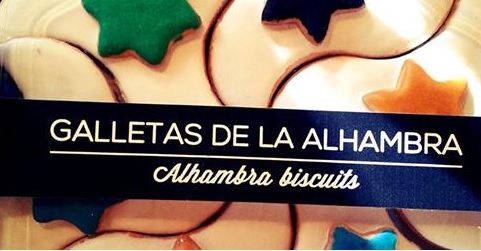The Council of the Alhambra uses the Monument’s hidden charms to nourish our interest in our historic heritage, and also to appeal to our stomachs, with the ecologically certified olive oil it produces from its ancient trees. It now also has a new line of ‘baketecture’, a work of art in biscuit form.
Thousands of tourists come to the Alhambra with a monumental appetite for its palaces and gardens and a desire to find out more about the secrets of the monument perched on the hill above Granada.
And as man cannot live on art alone, the Council of the Alhambra has made part of its rich heritage into a delicacy within easy reach of all visitors, who can take home a piece of the essence of the Alhambra.
One of the Council’s latest ideas has been to convert the monument’s architecture into culinary art, thanks to “baketecture”, a mixture of artistic designs with Arabic recipes which results in biscuits with which visitors can round off their stroll through the palaces with a sweet final touch.
The Director of the Council of the Alhambra, María del Mar Villafranca, explained to the Efe News Agency that the idea came from an architect who amongst other things made sweetmeats with designs inspired by her profession.
“After a long process we have created some delicious biscuits that perform the dual function of all the products in the Alhambra shops, in that they offer high quality and convey the essence of the monument”, Villafranca said.
The line of biscuits recreates the artwork of the Alhambra with an initial selection of six plasterwork and tile designs, so converting the architectural motifs, wall decoration and floor paving of the courtyards into biscuits.
This monumental mouthful also serves as a means of disseminating some of the exquisite details of the Alhambra in biscuits which are baked thanks to recipes inspired by Arabic cooking based on almonds, honey and spices, so arousing ancient Moorish sensations.
In the future this sweet offering will be joined by other tasty products inspired by the Bell-Tower (Torre de la Vela) and the Tower of the Seven Floors (Torre de los Siete Suelos), although for the time being the biscuits will only be adorned with the plasterwork inscriptions from the monument and some of its classic images such as the ‘pajarita’ tile design.
The biscuits are on sale in the Alhambra shops either individually or in boxes with all the different designs. According to the Director of the Alhambra “although the biscuits are beautiful to look at, it would be a shame not to try them, because they are quite delicious”.
And as each one of us has our own ideas about what tastes good, the Council also offers the chance of savouring the essence of the Nasrid Kingdom in the form of liquid gold thanks to over 2600 bottles of ecologically certified oil produced from the olives from its ancient olive trees.
The Council has bottled almost 12,000 litres worth of oil in 1,776 quarter-litre and 888 half-litre bottles and the mini 50 ml pack of ‘Liquid gold from the Alhambra’.
Visitors who do not feel hungry at the end of their tour of the Alhambra and have interests that go beyond the purely culinary, can also take home a little piece of the Alhambra in the form of air-fresheners or candles with floral or aromatic essence of myrtle, a typical Alhambra plant with a fragrance that will surely remind them of their visit.
Patronato de la Alhambra y Generalife
Organismo encargado de la protección, administración y conservación de la Alhambra y el Generalife





 Contact
Contact
















